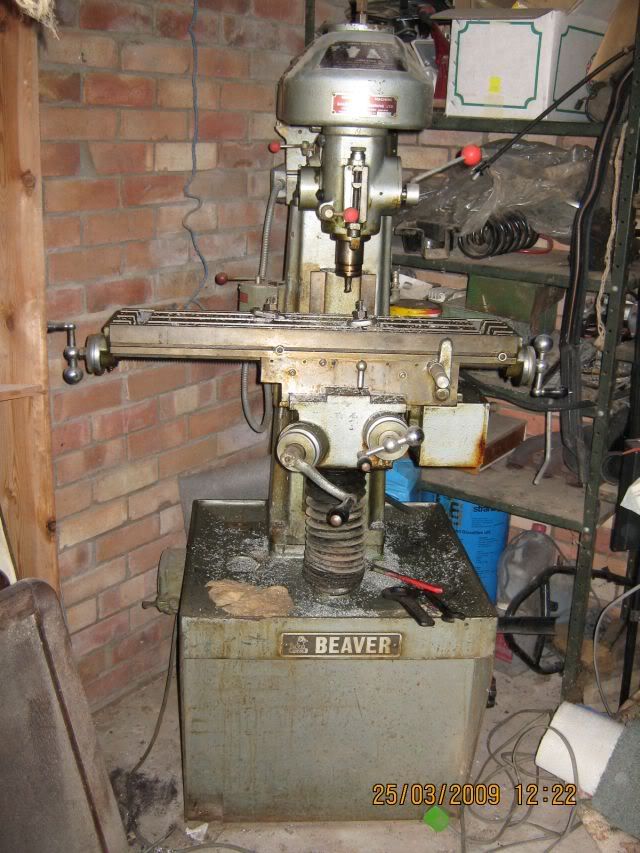Anyone seen one of these before?

It's a Beaver A and was made by a local firm here in Norwich.
I bought it from a retiring engineer friend in the 80's and he moved it across the road on a hand cart only removing the turret to lighten the load. According to the manual
it weighs nearly 9 cwt. If I guess correctly that's about 3/4 of a ton.
I have to move it again now and am considering taking it apart so I can get it home a bit at a time in the car. I think if each piece is around 1/4 ton it should be possible.
Not sure if it's a good idea or if it should be kept in one piece if possible. Any advice would be appreciated as I know nothing about the rights and wrongs of moving mills at all. Other than don't drop it on my foot :big:
Mo ???

It's a Beaver A and was made by a local firm here in Norwich.
I bought it from a retiring engineer friend in the 80's and he moved it across the road on a hand cart only removing the turret to lighten the load. According to the manual
it weighs nearly 9 cwt. If I guess correctly that's about 3/4 of a ton.
I have to move it again now and am considering taking it apart so I can get it home a bit at a time in the car. I think if each piece is around 1/4 ton it should be possible.
Not sure if it's a good idea or if it should be kept in one piece if possible. Any advice would be appreciated as I know nothing about the rights and wrongs of moving mills at all. Other than don't drop it on my foot :big:
Mo ???




